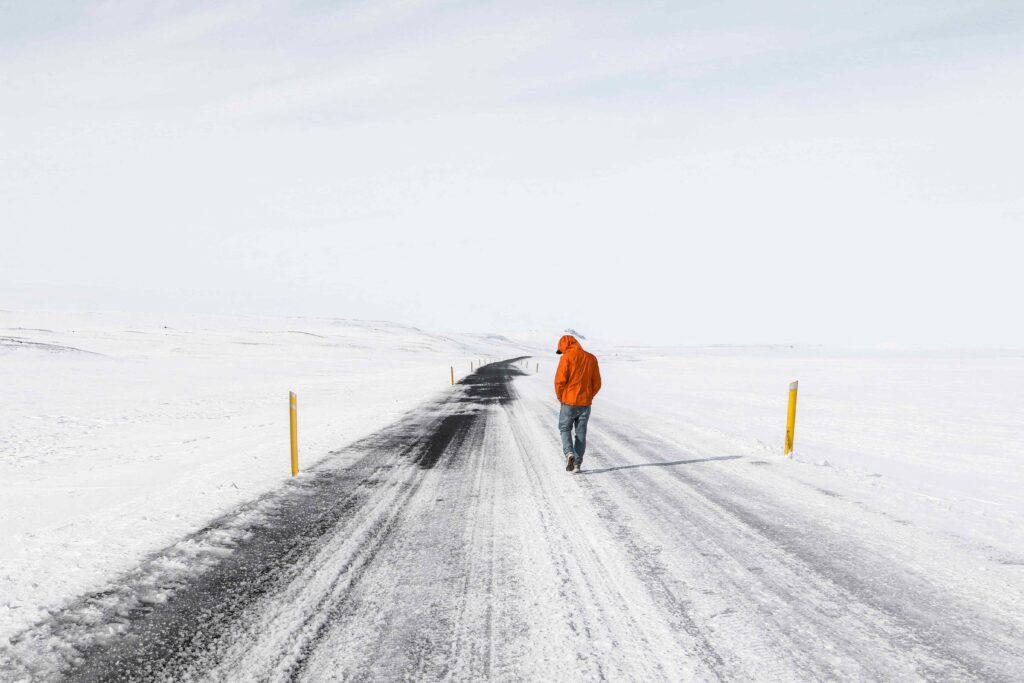
Find out everything you need to know about visiting Iceland in January. Many of Iceland’s greatest attractions, such as northern lights, glacier hiking, and ice caving, are best experienced in the winter in Iceland.
January is one of the darkest and coldest months in Iceland. The sun shines for only a few hours every day, the landscapes can be blanketed in three feet (approximately one meter) of snow. The roads are often covered in ice, so you are better off driving a 4×4 car.
Christmas celebrations wind down in January, resulting in a drop in visitor numbers and ultimately making it one of Iceland’s quietest months.
Those who visit Iceland in January, a less noticeable season, will find gorgeous snowy landscapes, more hours of darkness to look for the northern lights and fewer crowds at popular attractions.
What Should You Do in Iceland in January?
In January, the weather in Iceland is often cold and snowy. Furthermore, it gets dark early in the evening, making the days short. This may make you wonder whether January is a suitable time to visit Iceland. Don’t let the weather deter you. There are so many things to do!
Several trips are still available around the country, some of which are best in the dead of winter, such as a visit to one of Iceland’s ice caves and, of course, seeing the northern lights.
You won’t be short of options for thrilling adventures if you make the most of your daytime hours.
Go Northern Lights Hunting
To book a Northern Lights tour, browse our available day tours here!
Soak In A Geothermal Pool
Slipping into one of Iceland’s many naturally heated geothermal pools is one of the nicest things to do in the winter in Iceland. In Iceland, public swimming is a way of life. No matter where you decide to swim, there are many options, and they won’t disappoint.
With the chilly weather, going to a geothermal pool in January is a fantastic experience. Indoor and outdoor pools are available at many pool complexes. The latter is particularly suitable for swimming in January.
A trip to the famous Blue Lagoon is one of the highlights of any trip to Iceland. It is open all year. The newly opened Sky Lagoon, with its infinity pool overlooking the ocean and easy access from Reykjavik’s city center, is also worth a visit.
Swimming in these geothermal pools in cold weather is exhilarating owing to the contrast between chilly air and warm water, whether you choose a public pool or a bucket list event like a Blue Lagoon trip.
Kopavogur is one of the several towns in the greater Reykjavik capital area and has a couple of easily accessible outdoor public pools. The Sky Lagoon is also located in Kopavogur. The Blue Lagoon is conveniently positioned between Keflavik and Reykjavik International Airport. Which makes it an ideal stop on your way to or from the airport. Either recharge when you arrive, or get well rested and comfortable prior to your flight home.

In January You Can Discover Iceland’s Ice Caves
The ice-cave season, which begins in mid-October or November and lasts until March, is in full swing in January.
The sub-zero temperatures ensure the caverns’ structural integrity. This means that they most likely are not flooded this time of year from melting temperatures.
The ice tunnels beneath the Vatnajokull glacier are quickly becoming Iceland’s most fascinating winter attraction.
The best ice cave trip departs from the Jokulsarlon glacier lagoon.
Because glaciers move constantly, the ice caves alter every year. Because of this diversity, no two visits are the same, and you may be lucky enough to see more than one while on tour.
Two-day and three-day packages are available from Reykjavik, allowing you to explore the ice caves, neighboring locations, and the South Coast.
